When your salary finally tips over $100,000, all your worries about living paycheck-to-paycheck should be gone, right?
Not necessarily. In fact, 16% of six-figure earners said they have difficulty covering basic expenses, such as food, rent or mortgage and car payments, according to a November 2020 survey by the Center on Budget and Policy Priorities.
They’re living paycheck-to-paycheck.
How is that possible? Here’s the thing: It doesn’t matter how much money you make if your expenses outweigh (or are equal to) your income. That’s why it’s so important to have a solid plan for your budget. Otherwise, you could end up with no savings and in debt.
No matter how much you earn, here’s how to break the paycheck-to-paycheck cycle.
Make a Budget and Stick to It
It’s no question that the cost of living is going up at a rapid pace — not just in big, growing cities, but all around the country.
Yet slowly rising wages can’t take all the blame for our $0 balances at the end of the month. Poor budgeting — and lack of budgeting education — is holding millions of us back. So if you don’t have a budget or haven’t updated yours in a while, get one together.
If you don’t know where to start, a simple and straightforward approach is a good way to begin your budget overhaul. We like the 50/30/20 method. You map out all your expenses like this:
- 50% of your monthly take-home goes to what you need. That includes rent, groceries, utilities, minimum debt payments, childcare, etc.
- 30% goes to your wants — like your Netflix subscription, dinners with friends and travel costs.
- 20% is earmarked for financial goals, like paying down debt, growing your savings and adding to your retirement fund.
If you’re living paycheck-to-paycheck, that last 20% likely isn’t getting the attention it needs from your bank account. And while the “wants” can easily get out of hand, it’s your “needs” that can be the biggest culprits.
So, how do you fix that? Here are some secrets to help you regain control of your spending and put more money in your savings:
Cut Costs and Bills Where You Can
Usually, your biggest monthly expense is your rent or mortgage payment. And unless you’re living the #vanlife or have a sweet month-to-month set up, chances are finding a cheaper place to live next month is out of the question.
But there are some necessary bills you can cut down significantly, without sacrificing the services you need.
- Car Insurance: Shop around for new car insurance every six months, and you could save some serious cash. Use a website called EverQuote to see all your options at once and save up to $610 a year. It takes just a couple of minutes to get started by answering some questions about yourself and your driving record.
- Homeowners Insurance : Homeowners insurance can be a huge waste of money if you get the wrong coverage. To see if you’re overpaying for your policy, check out a website called SmartFinancial . It’s a digital marketplace where you can get quotes and compare rates to make sure you’re getting the best price. It could save you hundreds of dollars.
Ask This Website to Help Pay Your Credit Card Bill This Month
No, like… the whole bill. All of it.
While you’re stressing out over your debt, your credit card company is getting rich off those insane interest rates. But a website called Fiona could help you pay off that bill as soon as tomorrow.
Here’s how it works: Fiona can match you with a low-interest loan you can use to pay off every credit card balance you have. The benefit? You’re left with just one bill to pay every month, and because the interest rate is so much lower, you can get out of debt so much faster. Plus, no credit card payment this month.
If your credit score is at least 620, Fiona can help you borrow up to $250,000 (no collateral needed) with fixed rates starting at 2.49% and terms from 6 to 144 months.
Fiona won’t make you stand in line or call a bank. And if you’re worried you won’t qualify, it’s free to check online. It takes just two minutes, and it could save you thousands of dollars. Totally worth it.
All that credit card debt — and the anxiety that comes with it — could be gone by tomorrow.
Create a Separate Account for Savings
Once you’ve cut down your monthly costs, make sure you’re prioritizing your savings. Whether that’s contributing to your retirement plan, investing in the stock market or building up an emergency fund — you did it! Congrats on breaking the cycle and cleaning up your spending habits.
But speaking of emergency funds, many Americans don’t even have $400 saved in case their car breaks down or their kid ends up in the ER.
Where should you start saving for one? A typical savings account won’t earn you much interest.
That’s why we like a free account from Aspiration. Its Spend and Save account could earn you up to 16 times the national average interest on your money, plus up to 5% cash back, if you use Aspiration’s debit card. It’ll help grow your emergency savings fund that much faster.
Enter your email address here to get a free Aspiration Spend and Save account. After you confirm your email, securely link your bank account so they can start helping you get extra cash. Your money is FDIC insured and they use a military-grade encryption which is nerd talk for “this is totally safe.”
Follow these secrets, and you’ll be well on your way to breaking the paycheck-to-paycheck cycle.
Kari Faber is a staff writer at The Penny Hoarder.
This was originally published on The Penny Hoarder , which helps millions of readers worldwide earn and save money by sharing unique job opportunities, personal stories, freebies and more. The Inc. 5000 ranked The Penny Hoarder as the fastest-growing private media company in the U.S. in 2017.



